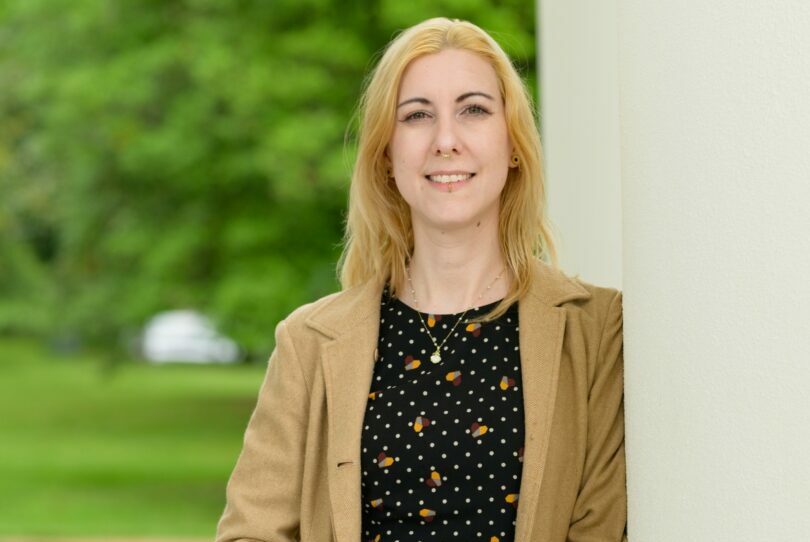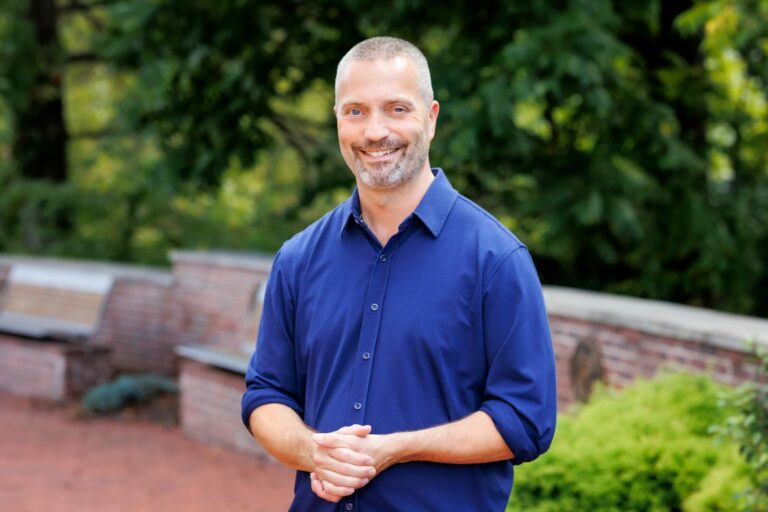We were lucky to catch up with Ryan Carter Media Tv recently and have shared our conversation below.
Alright, so we’re so thrilled to have Ryan with us today – welcome and maybe we can jump right into it with a question about one of your qualities that we most admire. How did you develop your work ethic? Where do you think you get it from?
From Imagination to Innovation: How Dreams Paired with Education Changed My Life
As children, our imaginations were limitless. A stick became a sword, a rock transformed into a baseball, and our backyards became stadiums filled with roaring fans. In those moments, we weren’t just playing—we were building the foundations of creativity, problem-solving, and vision. For many of us, those moments sparked the belief that we could create something extraordinary, take center stage, and live out our wildest dreams.
But dreams alone are not enough. It’s the pairing of imagination with education, structure, and consistency that transforms aspiration into reality.
Growing up in Watts, California—a place often associated with hardship and adversity—those childhood dreams felt both vital and distant. In a community where many of my peers fell victim to circumstances like poverty, drugs, and violence, the odds were stacked against me. Without a father in the home and minimal parental supervision, I was left to chart my own path. Yet, I never stopped believing in the power of those early dreams. And I wasn’t alone; many individuals from environments like mine defy the odds because they refuse to give up.
When I discovered Southern New Hampshire University (SNHU), everything changed. It wasn’t just an education—it was a lifeline. SNHU didn’t just teach me the technical skills of photography, graphic design, and storytelling; they taught me to believe in myself and my art. For the first time, I felt seen, understood, and supported. They didn’t just teach—they nurtured, encouraged, and gave me the tools to thrive in ways I hadn’t imagined.
Through their fine arts program, I became a photographer, graphic designer, web designer, and writer. Before SNHU, I had no formal training. Afterward, I became a one-stop shop for creativity. I learned to balance dreams with discipline, imagination with structure, and passion with persistence.
Today, I’m Ryan Carter of Ryan Carter Media TV—a wildlife photographer, storyteller, and entrepreneur. I’m proud to say that I’ve built a growing fanbase in wildlife photography, a field I entered in April 2023. My journey from Watts to the world is a testament to the power of pairing dreams with education.
When people see my book, Birds Prey Too, they often ask, “How did you do it?” The answer is simple: everything you see—from the photography to the design, the writing to the editing—was done by me. SNHU gave me the tools to self-publish a professional book without needing a $5,000 budget. My equipment isn’t top-of-the-line, but what sets me apart is my training, my creativity, and my commitment to excellence.
I create for the dreamers—the ones who’ve been told they’ll never make it, who’ve stumbled, who’ve doubted themselves. I create for those who believed in me when I couldn’t yet believe in myself. SNHU taught me that not everyone will like my work, and that’s okay. The important thing is to keep going, to finish strong, and to let my art speak for itself.
To those who wonder if their circumstances define them, know this: your past doesn’t limit your potential. Education, paired with relentless imagination, is the bridge to your wildest dreams.
I’m proud to be a trailblazer—the first successful wildlife photographer from my demographic and community. And I’m here to say: if I can do it, so can you.
As Winston Churchill once said, “The only way to get history is to write it yourself.”
So here I am, writing my story—and it’s only the beginning.
My father always says “Remember why you do what you do and who you do it for!”
Let’s take a small detour – maybe you can share a bit about yourself before we dive back into some of the other questions we had for you?
I am a wildlife photographer, specializing in raptors. While I photograph a wide range of wildlife and nature, raptors have become my signature focus and are the reason I’m well-known in my community.
Let me clarify something: I am not a birder. My knowledge of birds is limited to those I regularly see and hear. However, I’m deeply knowledgeable about raptors, a subject I explore extensively in my second book, Birds Prey Too.
My work involves traveling to identify and document Raptor-Rich Environments (RREs). Here’s how I define RREs:
Raptor-Rich Environment (noun):
A natural habitat characterized by a high presence and diversity of raptors, including birds of prey such as hawks, eagles, falcons, and owls. These environments span ecosystems like forests, grasslands, deserts, and areas near water sources, offering the resources raptors need to thrive—food, nesting sites, and ideal hunting conditions.
In 2024, I achieved my highest raptor counts twice, encountering 42 individuals in a single day on both occasions. On June 30th in Vancouver, BC, Canada, I observed 42 American Bald Eagles. Later, on December 21st, while traveling to the Sonny Bono Wildlife Reserve in Calipatria, California, I encountered 42 American Kestrels.
If you’re interested in my work, you can find my book here: Birds Prey Too. Keep an eye out for new merchandise launching in the next month, and follow my latest project, the Keen Vision Podcast, on Instagram @keenvisionpodcast.
The podcast is part of a movement I’m building to bring the wildlife and nature community together. It’s not just for photographers. We’ve featured experienced photographers, birders, bird banders, hobbyists, and others passionate about wildlife and nature. The best part of this journey is meeting people from all walks of life I wouldn’t have connected with otherwise.
Wildlife photography is like sports—it brings people together. But what makes my story unique is that I’m the first successful wildlife photographer from Watts, CA, raised in South Central Los Angeles. I’ve met many Black wildlife and nature photographers, but none share my origins or my journey.
Abandoned at age 7, I didn’t have a fair start in life. Yet, I stayed focused on creating opportunities for myself. When one door closed, I found another. Hard work and relentless dedication have shaped me into the person I am today.
In wildlife circles, people often notice my tattoos—symbols of where I come from, not where I’m headed. What they don’t see is the story of perseverance and the unwavering belief I had in myself.
The support I received from mentors like Colleen Vandenburg and other professors at Southern New Hampshire University (SNHU) was instrumental to my success. Their guidance helped me refine my craft and grow professionally, despite the odds.
If you share a passion for wildlife or nature, I invite you to join this movement. Let’s connect and grow together.
If you had to pick three qualities that are most important to develop, which three would you say matter most?
Over time, I’ve come to realize that my greatest skill is the ability to dream endlessly. I’ve always envisioned myself achieving greatness, even before I knew I’d become a wildlife photographer. What I did know was that I wanted to reach people, inspire youth, and give back to my community in meaningful ways.
While I learned photography techniques at SNHU, the creativity I possess is something no school can teach. It’s innate—a perspective I’ve had since childhood. The way I see the world is unique, and I’ve dedicated countless hours to nurturing that vision. I’ve always strived to be the best at whatever I do, and I knew early on that my storytelling needed to stand out from others.
For those looking to excel in wildlife and nature photography, here’s my advice:
Never give up. Perseverance is the most important quality you can have.
Don’t get caught up in chasing the latest gear. A new camera won’t make you great; your dedication and skill will determine your success.
Practice relentlessly. Master Photoshop, Lightroom, and your camera. Keep shooting, editing, and improving. Don’t let comparisons to others—whether it’s their equipment, following, or likes—distract you. Focus on creating and sharing your art.
Pursue formal training. Enroll in courses on photography, lighting, and editing. These will provide structure, balance, and a deeper understanding of your craft. Just remember to stay true to your goals and keep them in mind throughout your learning journey.
The key is to stay consistent, keep learning, and always strive to tell your story in your own unique way. The more you create, the better you’ll become.
What is the number one obstacle or challenge you are currently facing and what are you doing to try to resolve or overcome this challenge?
I believe this is an important question because it’s something many others will face, and I hope my perspective can help them tackle it head-on.
The biggest challenge I face in wildlife and nature photography is acceptance. I know I’m not always welcome in this space, but instead of seeking approval, I impose my will. I keep moving forward unapologetically, without worrying about others’ opinions. Worrying only wastes time and energy—time that could be spent progressing and growing.
If your goal is to excel, you must succeed regardless of obstacles. That means getting laser-focused and continually building on your efforts. For me, that means traveling, capturing incredible raptor images, and consistently releasing books that set a new standard. I’ve come too far to turn back now, and caring about what others think is not something I allow myself to dwell on.
I think it’s crucial for people to believe in themselves and strive for more. If you let someone else’s opinion slow you down, you’re creating unnecessary barriers for yourself. Instead, focus on your vision, trust your abilities, and keep pushing forward.
Contact Info:
- Website: https://ryancartermediatv.com/
- Instagram: https://www.instagram.com/ryancartermedia.tv/
- Facebook: https://www.facebook.com/ryancartermedia.tv/
- Twitter: https://x.com/Ryancartermedia
- Other: https://www.tiktok.com/@ryancartermedia.tv














Image Credits
All photos of me are by https://www.instagram.com/annecarter_kvbts/ (Anne Carter). All wildlife images are by me: Ryan Carter Media TV




